How the Prius came to define hybrid cars
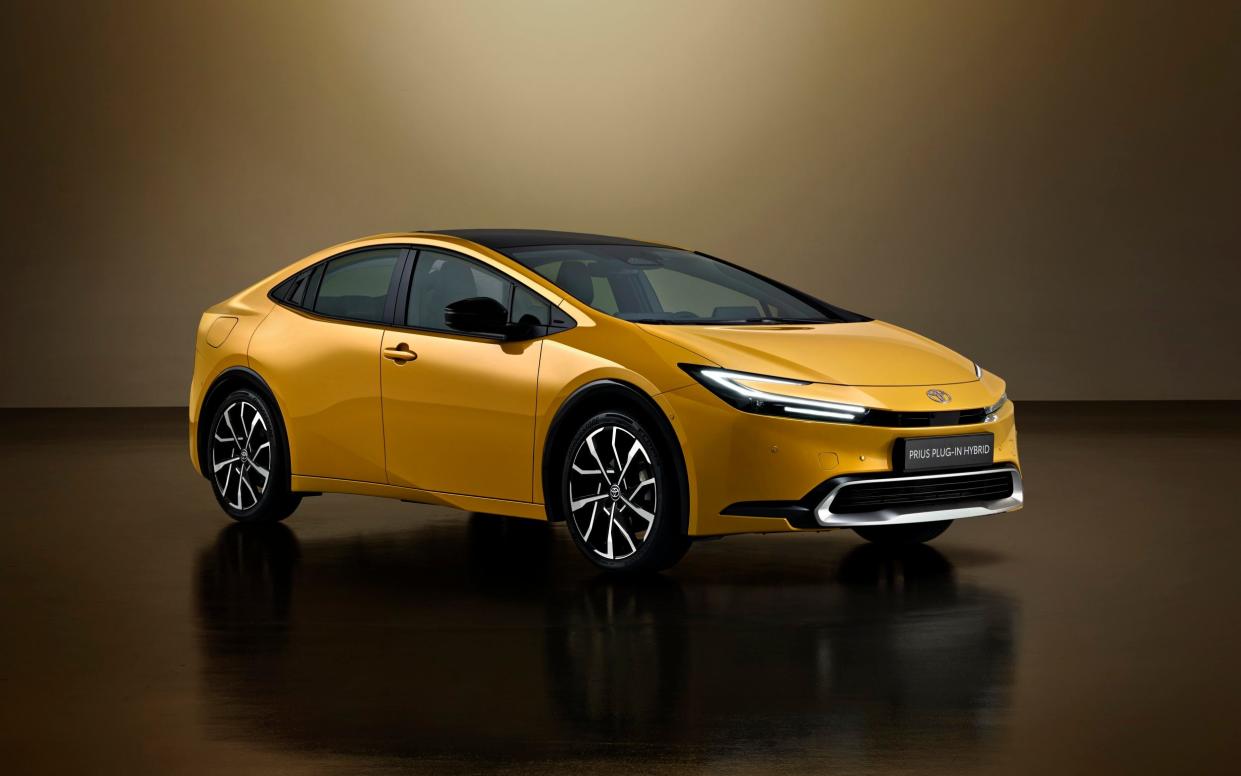
Toyota wouldn’t talk about Uber minicabs and their crucial role in rescuing its 25-year-old Prius hybrid programme, but the Japanese giant’s seeming indifference to this important market could be seen not just in the decision to import only the plug-in hybrid version of the all-new Prius next year (there is a non-plug-in version, too), but also in the car’s styling.
I’m exactly six feet tall. When I climbed into the back seat of the prototype displayed in Brussels last week, my head was brushing the roof.
The Mk5 Prius has been designed to look good and be efficient, but not necessarily do a job of work in the ride-hailing taxi trades globally. Whether its low-roof coupé styling and slightly cramped rear seat, or the price and weight-inflating effect of carrying a big plug-in battery on board, will deter sales into Uber, Lyft and the like across the world’s megacities remains to be seen.
Extra five years of life
Details of the new car remain scant, though we know that with a plug-in hybrid (PHEV) drivetrain, the new Prius will likely have a longer on-sale life in the UK and EU where they will likely enjoy a five-year extension after the 2030 UK ban on pure combustion-engined and self-charging hybrids.
The fifth-generation Prius is based on the second-generation of the GA-C version of Toyota’s New Global Architecture, which apparently offers much improved ride and handling. The roofline is 50mm lower than the outgoing model and it rides on inch-larger (19in) diameter wheels and tyres. At 4,599mm in length, it’s 46mm shorter, but with a 50mm longer wheelbase which should give more leg space for passengers.
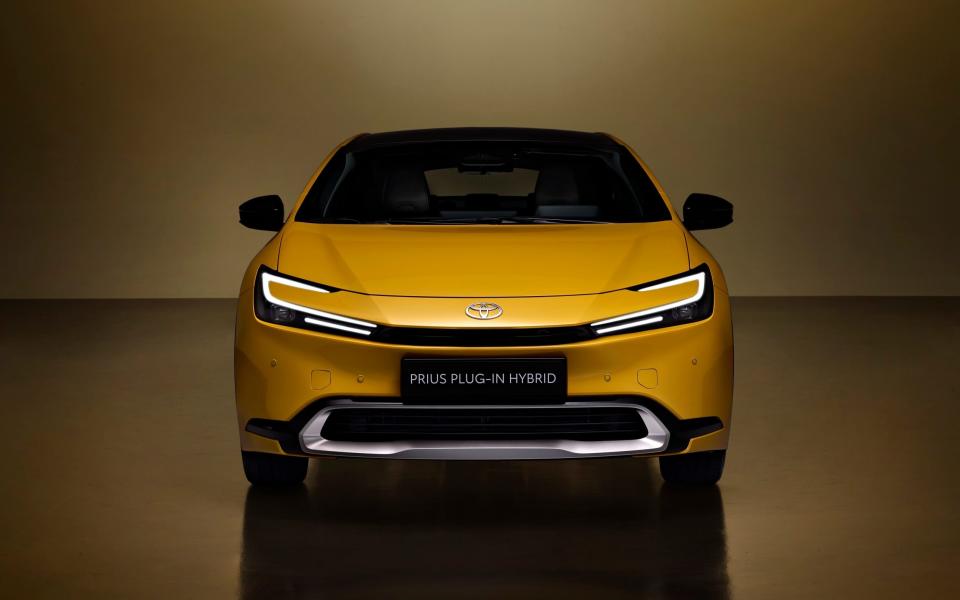
The 2.0-litre, four-cylinder petrol engine produces 150bhp, which drives Toyota’s two-motor epicyclic hybrid system boosted with a 13.6kWh lithium-ion battery. Total system output is 220bhp and Toyota claims an electric range on the battery alone of up to 43 miles. There’s even a solar panel in the roof which will help eke out the range on sunny days, generating around 5 miles of electric-only range a day.
Where did it all begin?
It’s been 25 years since the debut of the car which even Toyota admitted it wouldn’t ever make money on. The Prius was the nascent petrol-electric hybrid, which Jay Leno described as: “This terrible egg… slow, wheezy and tinny.”
Named after the Latin word for first, superior or original, Prius wasn’t the original hybrid driveline by a long chalk. Back in 1900 Ferdinand Porsche designed the Lohner Semper Vivus, a crude but effective plug-in petrol-electric hybrid, and since then generations of locomotives and plant equipment have used hybrid drivelines.
Toyota announced the Prius in 1993 as a concept with a cone-clutch power splitter. It was clever, but crude, though Toyota persevered. Four years later, in December 1997, the first example of a more sophisticated production Prius (with an epicyclical power splitter) rolled off the production line and went on sale in Japan, though even there it was considered something of an oddity. Toyota was targeting markets such as the West Coast of America and Far Eastern megacities such as Tokyo, where atmospheric smog demanded low-emissions operation; diesel was mistrusted, diesel fuel was high in sulphur and there was no diesel refuelling infrastructure for cars.
The Prius drivetrain was designed for horrendous traffic conditions, where cars shunted bumper to bumper, sometimes for hours. The Prius would shunt forward on its meagre battery power then recover some of that energy as regenerated current in the battery; all without recourse to the petrol engine.
Yet in the UK it wasn’t the first hybrid car on sale as Honda beat Toyota to the punch with its Insight, a much better-driving hybrid, but which lacked the bizarre staying power of the Prius.
Part of the Prius’s appeal has to be laid at the door of Toyota’s relentless publicity machine. The Prius became a celebrity green washing machine, a role which Tesla performs today. Hollywood luminaries Tom Hanks, Julia Roberts, Leonardo DiCaprio, Jessica Alba and Natalie Portman were all photographed alongside their “pious Prius” transport and come Oscars night a column of the Toyota hybrids would disgorge the stars (although when time came to quit the after-show parties, stretched limos became the ride of choice).
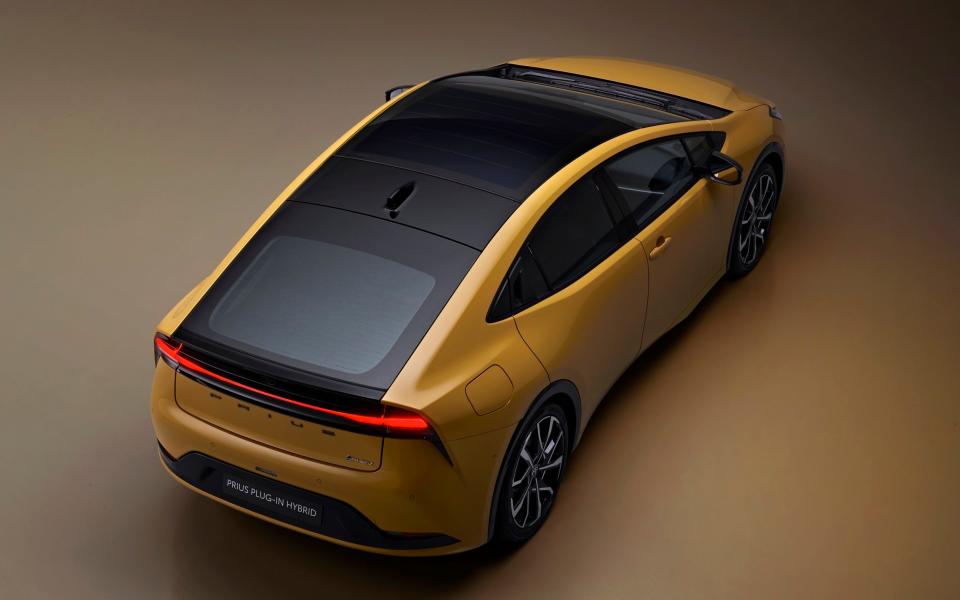
It might have been clunky to drive and weird to look at, but the technology embodied in the Prius also formed the basis of Toyota’s subsequent hybrids, which by April 2020 had sold a total of more than 15 million. As for Prius sales, by July this year in just its hatchback form, more than 4.7 million had found homes around the globe (88,382 in the UK), which makes it by far the world’s best-selling hybrid.
And the Prius’s hybrid technology also powered other cars. In 2004 Ford admitted that it had licensed about 20 Toyota Motor Corporation rights to manufacture its uncannily similar hybrid system first introduced in the Escape and then that car’s European sister, the Kuga hybrid.
How does it work?
The basic concept for the Toyota hybrid is simple, but the practise is super-complicated and clever, though some claim the system was derived from a patent filed in 1969 by a group of Californian engineers. The initial system used two motor/generators and a petrol engine driving the front wheels via an epicyclic transmission, with a relatively small, light and robust nickel metal hydride battery (NiMH) battery. The ability to act as a series and a parallel hybrid gave Toyota’s engineers endless games to play to maximise efficiency.
I drove the first production version in 1998, two years before it went on sale in Europe. The engineering was irresistible, but there were concerns that the Prius’s in-use consumption didn’t meet its maker’s claims, that it was spectacularly ugly and it was also poor to drive.
A few months later at a press conference at the 1998 Paris motor show, Toyota president Katsuaki Watanabe admitted that the Prius was being sold at a loss and would never make even a marginal profit contribution. Toyota appeared to be leveraging sales of combustion-engined petrol and diesel cars and SUVs against this spectacularly expensive hybrid technology. In other words, the Prius was its own green washing machine...
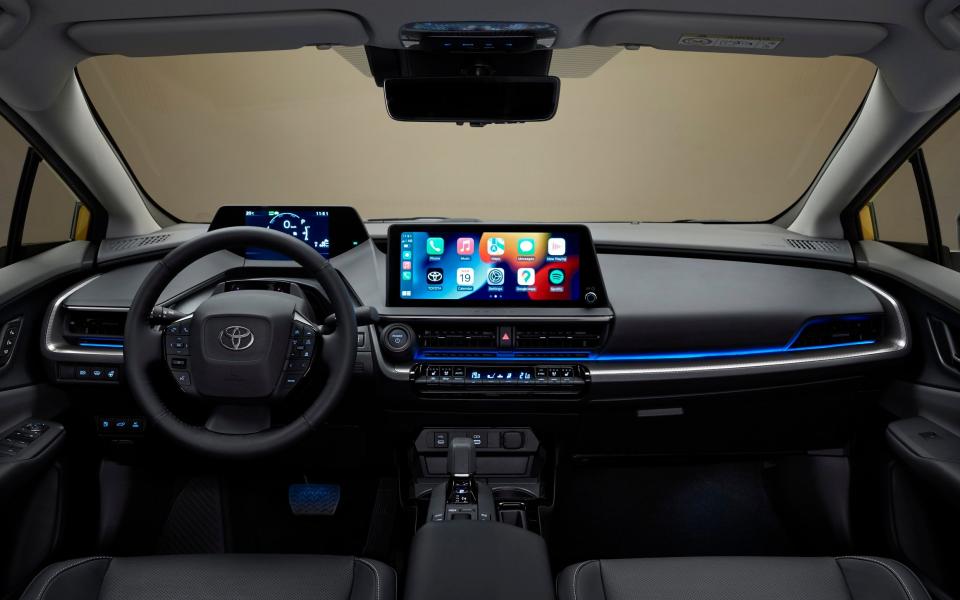
For while (with hindsight) the Prius ultimately turned out to have been a shrewd development program for the rest of the Toyota range, by 2000 and the launch of the Mk2 Prius, combined sales of Prii (after a public consultation, in February 2011 Toyota Motor Sales announced the collective noun for Prius was Prii) in Japan were only 37,425, which defines “very slow start”.
Yet Toyota needed to do something. Its highly successful sales of large saloons, SUVs and trucks meant the company’s corporate carbon footprint was beginning to overtake that of rival manufacturers. No longer was Toyota seen as the maker of small and economical cars; the growing perception was that it was a massive corporation building gas guzzlers, just like all the others.
Sales spike as oil prices rise
America reacts quickly to the price of gasoline. It goes down and everybody buys a massive pickup, it goes up and they buy a small car, or a Prius. Prius sales followed the price of gas as it burst through $4 per US gallon. Toyota, though, took nothing for granted. It began a massive PR campaign selling the Prius hybrid to politicians, celebrities and administrators, with almost uncanny timing…
The 1997 Kyoto summit and subsequent Protocol meant that global warming was on everyone’s lips. The Prius might not have been able to save the world (or the polar bear) but its city fuel economy was a start.
In the June 2001 UK general election, all the political leaders (Tony Blair, William Hague and Charles Kennedy) were lent cars (although each thought they were the only ones to receive a Prius) and yet more celebs joined the Prius bandwagon – Tara Palmer-Tomkinson, Wayne Hemingway and John Peel among others.
This relentless Prius campaign even played its part in changing the rules by which vehicle emissions were judged. Changing their usual stance about setting standards rather than picking technology, the Government's Powershift energy-saving programme adopted hybrid technology as a winner and, in turn, the capital’s Transport for London took those standards as a blueprint for hybrids being exempt from new congestion-charging regulations.
Governments had told us that the diesel engine’s inherent economy would save the planet, but the Prius was starting to win arguments, particularly in areas where air pollution was a problem. Even so, Toyota had a side bet with its new small-car diesel engine, the D-Cat unit. Only a few of us recall Toyota lobbying European legislators to tighten diesel emissions standards to match those of its low-emissions oilburner.
By this time rival makers had seen stormclouds of emissions regulations massing and had noted the popularity of Toyota’s Prius hybrid programme, which had helped to deflect criticism that the Japanese giant was making much of its profits from conventional internal combustion engines.
Several companies (including Japanese rival Honda) started to counter-brief on hybrids, pointing out that they are essentially a car with two engines therefore heavier, more expensive and less intrinsically economical than an optimised conventional car. When that campaign fell on stony ground, car makers reluctantly joined in the hybrid program.
“Hybrids are a necessary step,” admitted Bob Lutz at General Motors, “but whether they make financial sense is another question. If we didn’t do it, they [Toyota] would make us look like the gang who can’t shoot straight.”
Then came Tesla
February 2008 saw the first deliveries of the Tesla Roadster, the first production car to use lithium-ion battery technology as the prime mover. Crude and very first-generation it might have been, but this battery-powered Lotus Elise represented the writing on the wall, which made Toyota’s rigid adherence to hybrid aPrius assistant chief engineer on the 2016 Prius Mk4, said: “We know so much about the NiMH cell, we can utilise it more than we can a lithium-ion.”
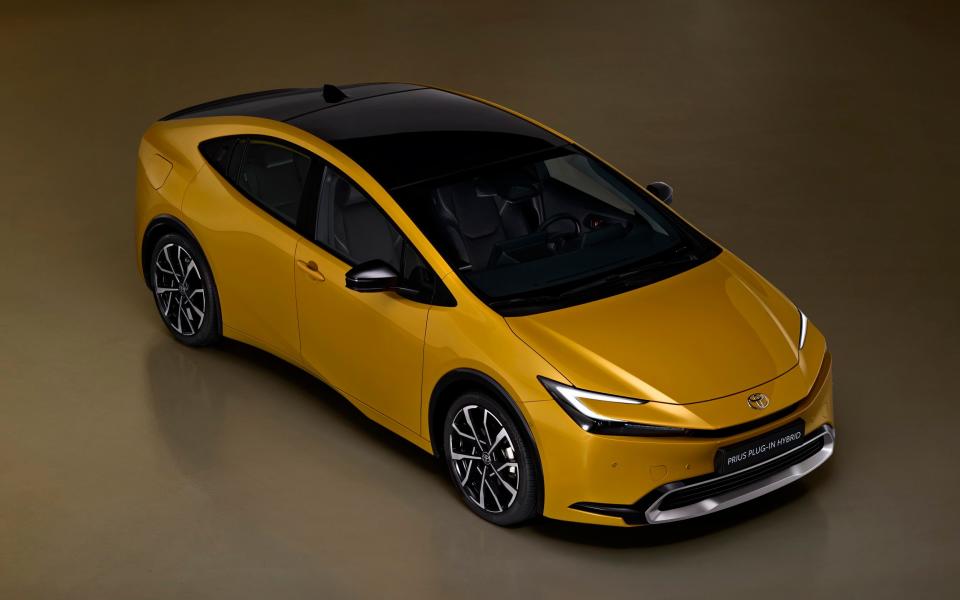
Yet just as now with lithium-ion, the spotlight was starting to turn to the extraction of nickel for NiMH batteries, while scientists were questioning the whole-life costs and emissions of these two-engined cars.
Yet still the Prius bandwagon rolled on, with Toyota adopting a process of continual improvement as hybrid technology spread across its ranges, claiming its CO2-saving technology was ahead of everything else.
Trouble was, the Prius still wasn’t much cop to drive. Extensive chassis strengthening for the Mk4 improved the tendency to wander all over the road at speed. Motors were getting smaller and lighter, software got better, but the transmission’s “rubber-band effect”, where the engine revs soared under even mild acceleration, didn’t commend the technology to drivers. In the UK, from a peak of 10,000 Prius Mk2 sales a year in 2003, sales plummeted to only 4,000 in 2016.
Uber to the rescue
Make that almost all drivers… One group of professional drivers who really appreciated the Prius as a reliable way of obtaining genuine fuel savings in urban use were cabbies. Toyota had been toying with the idea of a Prius sub-brand of lightweight, high-tech hybrids using exotic materials, a bit like BMW’s i brand, but it didn’t need to. Uber came to the rescue.
At that time in London there were about 12,500 Prius registered as private-hire vehicles. Seven years ago, an Uber spokesman admitted that 40 per cent of the one million vehicles on its platform were a Prius, which represents about one per cent of all Priuses sold.
But just as the Government gives, it also takes away. Where once diesel, liquefied petroleum gas (LPG) and then hybrid were the UK Government-supported answer to climate change, now it’s a monomaniacal endorsement of battery technology.
Politicians are a fickle bunch and while it’s difficult to get anyone at the Department for Transport to talk about anything but battery cars, they most certainly aren’t the only technology, with hydrogen fuel cells (another canny Toyota side bet with the Mirai, which also uses hybrid technology) looking like an increasingly better bet for heavy commercial vehicles, city-to-city cabs and those who regularly embark on long journeys.
So, is it all over for hybrids?
Yes and no. If the Prius amortised the horrendous cost of development of the hybrid system, subsequent group sales have paid off in spades for Toyota. The technology has been refined so much that an original Prius would scarcely recognise the latest hybrid-only Yaris supermini, or the mighty Lexus 500h with its four-speed gearbox, which banishes the rubber-band effect. The big-selling Corolla and Camry are all-hybrid ranges these days and there have also been previous plug-in versions of the Prius and the seven-seat Prius +, which turned out to be a sop to city fathers demanding low-emissions cabs.
Yet the legal requirement for Net Zero emissions seems on course to put paid to the hybrid in Europe, with accelerated timescales to outlaw combustion engines and funnelling passenger vehicles into battery technology against all opposition.
As with a lot of EU and UK Government pronouncements, however, all is not what it first seems. In June 2019 Emissions Analytics, the influential global testing and data company, released a report saying that if whole life costs are taken into account, hybrids are 14 times better at reducing real-world CO2 emissions than battery-electric vehicles (BEVs), concluding that “a major concern is that the push to BEVs will crowd out a more effective programme of mass hybridisation”.
The report went on: “Put another way, [and] given the urgency of the need to reduce CO2, paradoxically BEVs may not be the best way to achieve it with their supply chain, production capacity, infrastructure and customer acceptance challenges.”
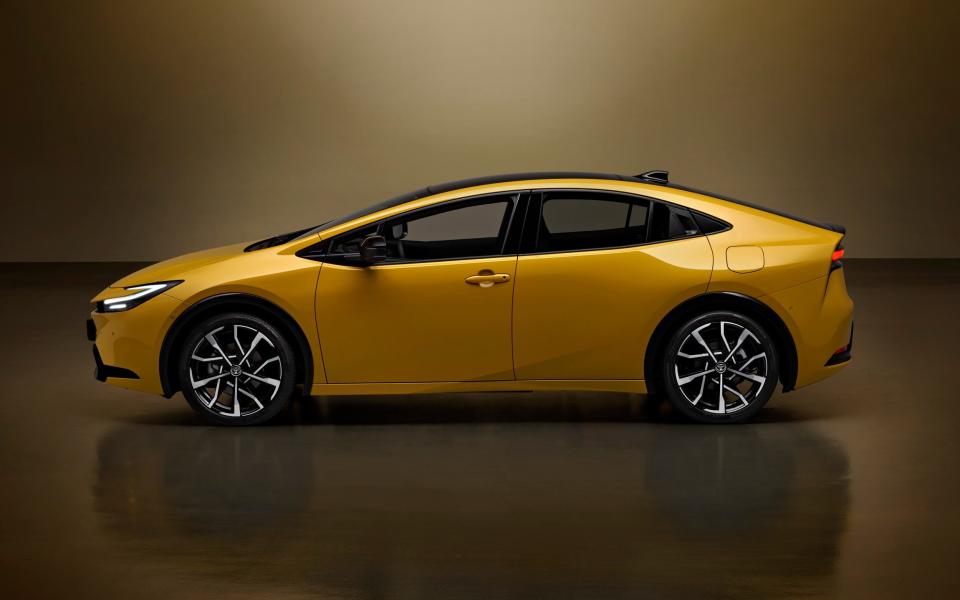
The UK is in the vanguard of this “battery-good, everything-else-bad” tendency, with an early ban on sales of new combustion-engined cars by 2030. Recent reports in The Sunday Telegraph have suggested that Toyota has made its position clear to Government. While supporting the ideal of Net Zero, it wanted to extend the life of what it calls “self-charging” hybrid technology (as exemplified by the Prius) to the same 2035 deadline as plug-in hybrids (PHEVs). The alternative, reports allege, is a withdrawal from its UK production sites in Derby and North Wales.
As so often in the UK, it’s the slogan first, with reality (and jobs) a distinct second.
Yet does the decision to only import the PHEV version of the new Prius (and not the self-charging hybrid version) indicate a raised white flag at Toyota? Lips were sealed at the launch of the latest Prius other than an admission by Matthew Harrison, Toyota Motor Europe’s president and chief executive, that, “in many, many markets we see selling hybrid, clearly plug-in hybrid, right the way through to 2035” but that the “UK government [has] been a bit of a rotating door – it’s been quite frustrating for us”.
And while some think that previous versions of the Prius have been designed with Uber precisely in mind, there was absolutely no acknowledgement of Uber’s role in saving the Prius.
Against all odds, the Prius has survived and looks as though, with this new model out next year, it will continue for the next few years at least.
It might have not been much to drive and its fuel savings are highly dependent on where and how you use it, but if cab drivers above all else know the true economic cost of running a car, then next time you climb into the back of one, give a few thanks to Toyota for persisting with the Prius.

 Yahoo Movies
Yahoo Movies 
